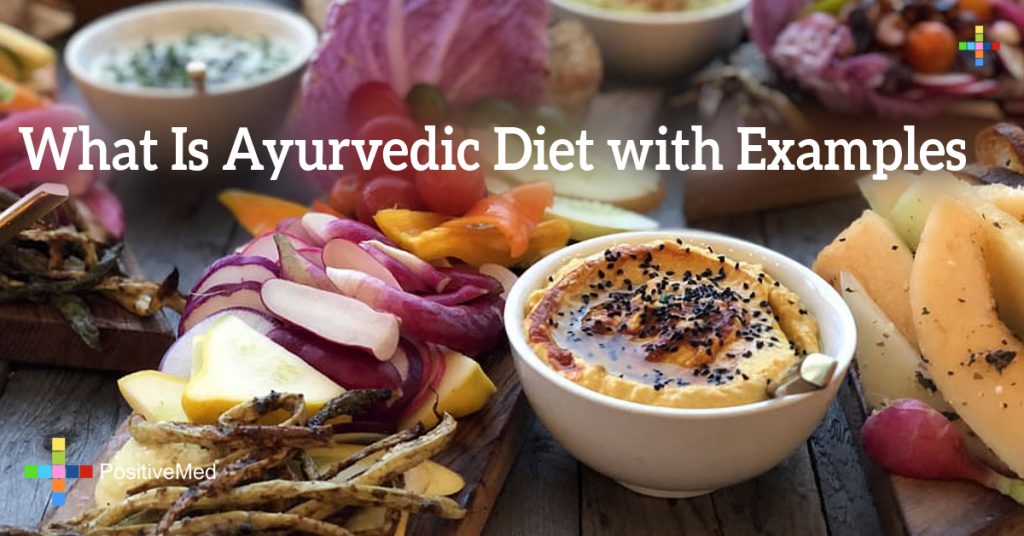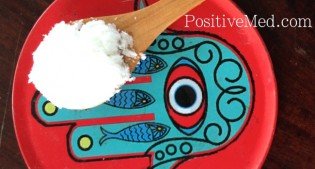
What is Ayurvedic Diet with Examples
By PositiveMed-Team
Edited By Stephanie Dawson
One of the fastest paths to good health is offered by the ancient medical system of India known as Ayurveda. This is getting famous in the Western part of the world right now. Ayurveda aims to achieve healthy living, this can be achieved by a balanced diet, which does not mean common crash diets.
Restoring the balance of Tridoshas is important for maintaining good health and this can be achieved by following an Ayurvedic diet. Food can be beneficial or harmful depending on our dosha and the same type of food may have opposite effect on other types of dosha. According to the science of Ayurveda, the foundation for healing is a right diet. The diet that balances our doshas is ideal for staying healthy.
Following are the three doshas and the foods to balance each of them:
Vata Dosha
Cold, dry, light, hard, and rough are the qualities of Vata Dosha.
Movement is the main function of the Vata in the body, everything is moved by it. When Vata dosha is dominant, people tend to be slim, with small frames and prominent bones. Staying too long at one place is boring for them, whether it’s a job, a place, apartment, or sometimes even partner. They are very fast, changeable, and any kind of movement, change, and travel excites them.

Vata Pacifying Food: Excess Vata needs to be counterbalanced and this can be done with the help of nutritive and tissue-building foods that are moist, warm, heavy, soft, and oily and foods with a sweet, sour, and salty taste. Foods that can help to pacify Vata include bananas, wheat, rice, corn, ghee, and other soft dairy products. Hot cereals with ghee, soups, vegetables, and whole cooked grains and chapattis are good for a person with Vata constitution. They can have spicy foods too if they like. Vegetables like cucumbers, beets, carrots, onions, garlic, okra, asparagus, radishes, turnips, and sweet potatoes; and fruits like bananas, dates, mangoes, coconuts, peaches, and other sweet fruits in can be enjoyed.
Foods like frozen desserts, crackers, and large amounts of raw vegetables and salads possess Vata qualities and as such tend to aggravate Vata types. Dry spices such as dried chile also aggravate Vata.
Pitta Dosha
Hot, sharp, oily, and light are the properties of Pitta Dosha.
Digestion, metabolism, and energy production is controlled by Pitta Dosha. Transformation is the primary function of Pitta.
People with Pitta are usually of medium size and weight. Baldness or thinning hair is common amongst these people.
Pitta pacifying food: Excess pitta can be balanced by foods that are cool, dry, and heavy with a mild, naturally sweet, or bitter taste. Examples of pitta pacifying foods are beans, rice, milk, steamed vegetables, and fruit. Mild spices like coriander, cumin, and cilantro are good for pitta people. They can eat most fruits and vegetables.
Pitta people should avoid pungent and oily foods such as curry, fried foods, and spicy condiments. Strong spices like garlic, dry ginger, and cayenne should also be avoided.
Kapha Dosha
Cold, heavy, liquid, and oily are qualities of Kapha Dosha.
The structure of the body is governed by Kapha Dosha while protection is the primary function of Kapha. It is the principle that holds the cells together and forms the muscle, fat, bone, and sinew.
Kapha pacifying foods: Kapha dominance can be balanced by eating smaller amount of foods. Dry, hot, and sharp food is recommended for this purpose. Examples of these foods include puffed cereals like puffed rice or corn, small astringent grains such as millet, and leafy green vegetables like spinach. Kapha people benefit from spices like ginger, turmeric, and chili. For fruit apples, pears, apricots, pomegranates, and dried fruits are also good.
Kapha can be aggravated in the body by foods such as wheat, avocados, oils, and dairy products.





